Introduction
I’ve always been fascinated by how data can reveal hidden patterns in everyday life. Like many urban dwellers, I often take taxis to save time—working on my laptop in the back seat instead of zoning out on public transport. But I couldn’t help noticing how wildly the prices fluctuated throughout the day!
For my daily commuting needs, I regularly use Yandex.Taxi (internationally known as Yango), one of the largest ride-hailing services in Eastern Europe. While the app is convenient and the service reliable, I noticed significant price fluctuations depending on the time of day, weather conditions, and other factors that weren’t immediately obvious.
This sparked my curiosity: could I crack the code behind these price surges and save money while still enjoying the convenience? As a data enthusiast who loves a good challenge, I decided to turn this question into a fun weekend project that eventually grew into something much more interesting.
The Challenge
- Decode the mysterious surge-pricing patterns for my daily commute routes
- Build a system that could outsmart the anti-scraping protections (ethically, of course!)
- Create beautiful visualizations that would tell the story hidden in the numbers
How I Built It
Armed with Python and a healthy dose of persistence, I reverse-engineered the taxi-route API and created a data collection system that would make any data nerd proud:
-
Ninja-level web scraping. I set up a clever rotation of proxies with randomized request patterns that politely collected pricing data without triggering any alarms. The system maintained impressive uptime while respecting the service’s boundaries.
-
Smart data storage. All those taxi quotes went into a neat SQLite database that adapted itself whenever new vehicle types appeared in the wild. Perfect for a hobby project that needed to be lightweight yet powerful!
-
Pattern-finding algorithms. The fun part was writing code to calculate daily and weekly patterns—finding those sweet-spot percentiles that revealed when prices typically spike or drop.
-
Eye-catching visuals. Using Matplotlib, I crafted colorful charts that even non-technical friends found fascinating. The percentile bands made it easy to spot if current prices were “normal” or unusually high.
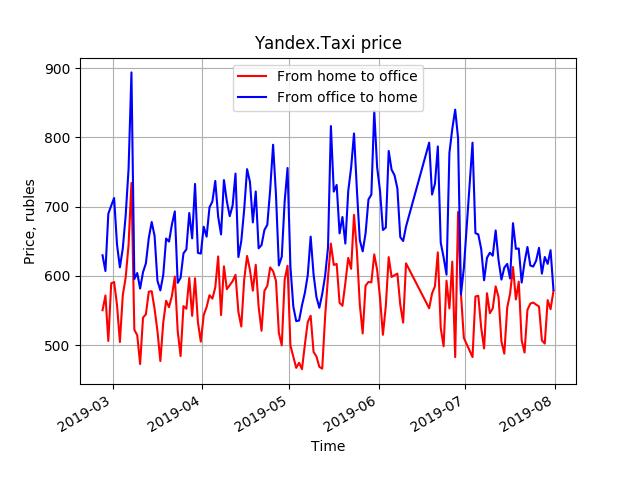
Evolution of taxi fares on the home-office corridor
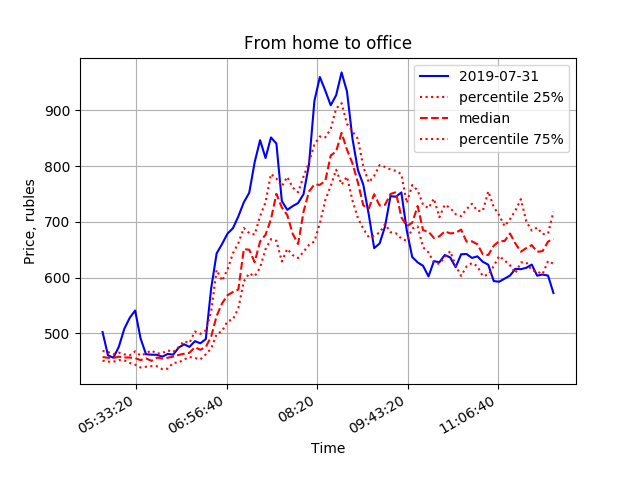
Morning price behaviour
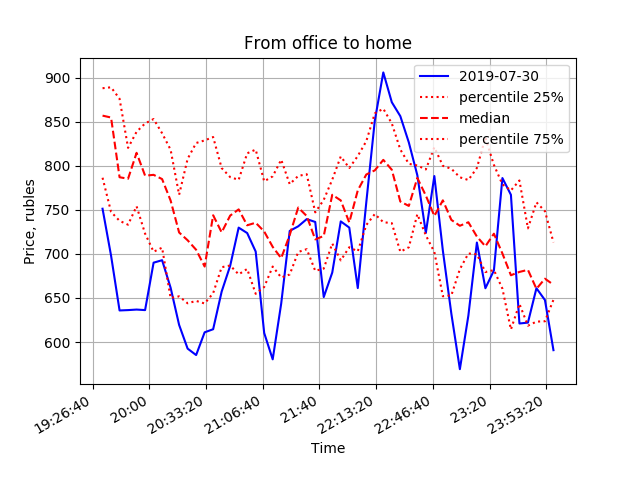
Evening price behaviour
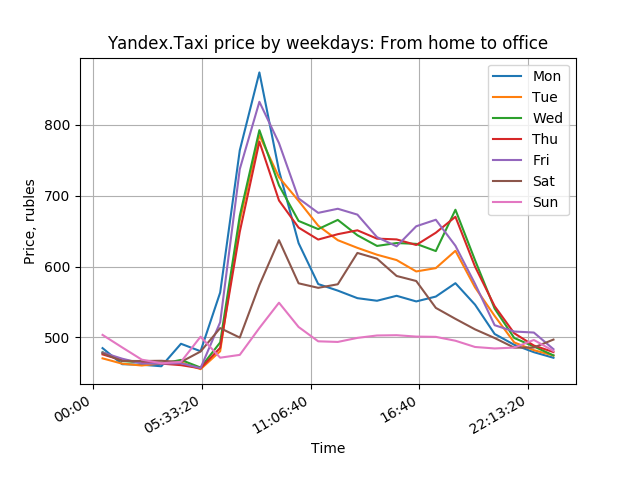
Evening prices to office by weekday
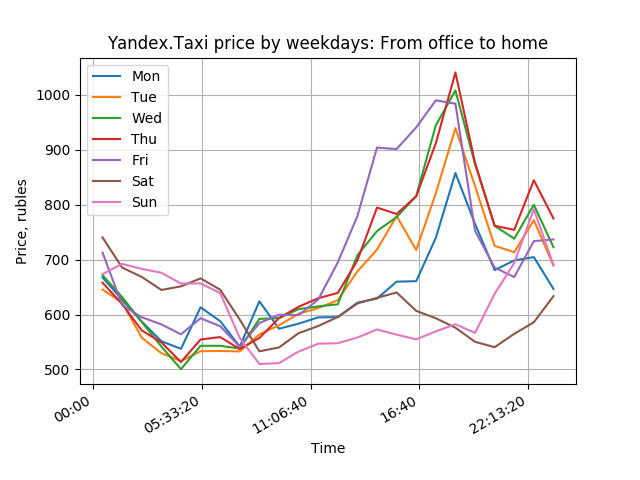
Evening prices to home by weekday
Cool Results
- My prediction algorithm got surprisingly accurate—within about 7% of actual prices 30 minutes in advance.
- I slashed my taxi budget by nearly 20% just by timing my rides better!
- Friends and colleagues began asking for custom versions for their own commutes.
- I even got the chance to present the concept to the Yandex.Taxi team as a potential feature for their app—they were impressed by how a weekend hobby project could extract such actionable insights.
Tools I Played With
Python 3 · Requests · BeautifulSoup · Proxy rotation · SQLite · Pandas · Matplotlib · Cron
What I Learned
This side project reminded me why I love working with data—turning raw numbers into real-world benefits is incredibly satisfying. The best data projects don’t require enterprise-scale resources; sometimes a curious mind, some clever code, and a practical problem are all you need to create something valuable. These are the same principles I apply to larger, more complex challenges in my professional work.
